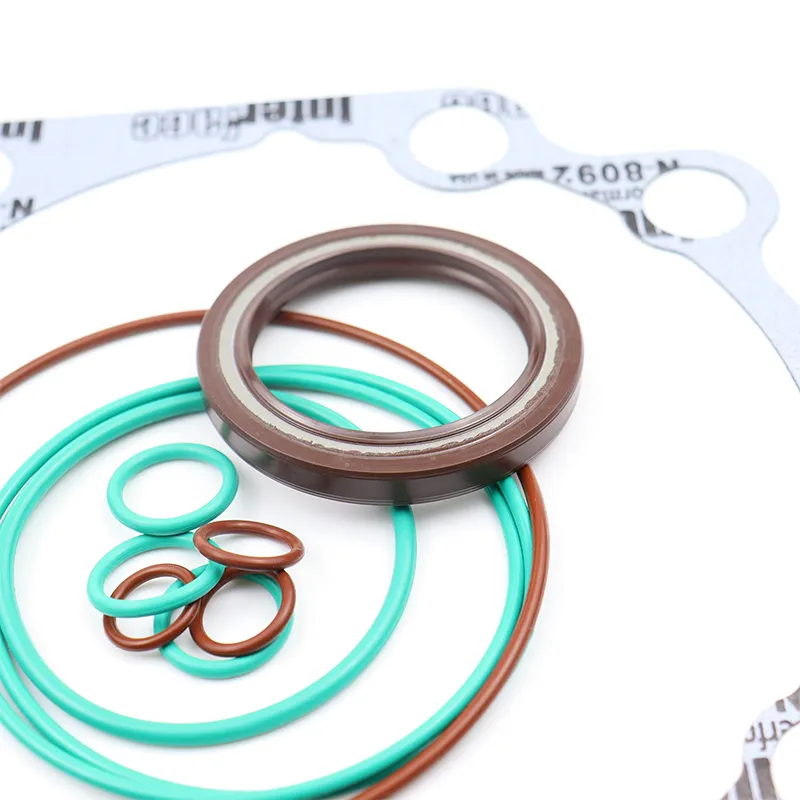Nov . 17, 2024 20:47 Back to list
Exploring Seals for Hydraulic Gear Pumps and Their Importance in Performance and Longevity
Understanding Hydraulic Gear Pump Seals Importance and Types
Hydraulic gear pumps are essential components in various industrial applications, providing efficient fluid transfer and pressure generation. However, the performance and reliability of these pumps heavily depend on the seals used within them. Seals play a critical role in preventing fluid leakage, maintaining pressure, and ensuring the overall efficiency of hydraulic systems.
One of the primary purposes of hydraulic gear pump seals is to contain the fluid within the pump casing. Any leakage can not only lead to reduced efficiency but also pose environmental and safety hazards. Therefore, selecting the right seal material and design is vital to ensure longevity and reliability in demanding conditions.
There are several types of seals used in hydraulic gear pumps, each tailored for specific applications and environmental conditions. The most common types include O-rings, lip seals, and mechanical seals.
O-rings are circular elastomeric seals that are often used in pump assemblies due to their simplicity and effectiveness. They are installed in grooves and work by creating a tight seal when compressed between two surfaces. O-rings are available in various materials such as nitrile, fluorocarbon, and silicone, allowing for compatibility with different fluids and temperature ranges.
hydraulic gear pump seals

Lip seals, also known as radial shaft seals, are designed to prevent leakage along the shafts of hydraulic pumps. They consist of a flexible lip that makes contact with the shaft, creating a barrier against escaping fluids. Lip seals are particularly effective in high-speed applications and are often made from materials like rubber or polyacrylate.
Mechanical seals are more complex sealing devices that provide high levels of leakage prevention and are often used in high-pressure applications. They consist of rotating and stationary components that create a fluid-tight barrier. The design of mechanical seals can vary considerably, but they typically include a spring mechanism to maintain contact with the rotating shaft, which compensates for wear over time.
The choice of seal material is equally important as the type. Seals must withstand not only the pressure and temperature of the hydraulic fluid but also potential chemical interactions with the fluid. Common materials include elastomers like Buna-N for general use, as well as specialized compounds for more aggressive environments.
In conclusion, the selection of hydraulic gear pump seals is a crucial factor that impacts the performance, efficiency, and longevity of hydraulic systems. Understanding the types and materials of seals available ensures that operators can make informed decisions, leading to reduced maintenance costs and improved operational reliability. Properly designed and maintained seals ultimately contribute to the smooth operation of hydraulic gear pumps in various industrial applications.
-
TCN Oil Seal Metal Ring Reinforcement for Heavy Machinery
NewsJul.25,2025
-
Rotary Lip Seal Spring-Loaded Design for High-Speed Applications
NewsJul.25,2025
-
Hydraulic Cylinder Seals Polyurethane Material for High-Impact Jobs
NewsJul.25,2025
-
High Pressure Oil Seal Polyurethane Coating Wear Resistance
NewsJul.25,2025
-
Dust Proof Seal Double Lip Design for Construction Equipment
NewsJul.25,2025
-
Hub Seal Polyurethane Wear Resistance in Agricultural Vehicles
NewsJul.25,2025
-
The Trans-formative Journey of Wheel Hub Oil Seals
NewsJun.06,2025
Products categories
















